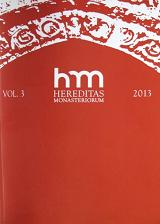Jezuici w trzech wielkich miastach pruskich w XVI–XVIII w.
Jesuits in three large Prussian cities in 16
Author(s): Sławomir KościelakSubject(s): History
Published by: Laboratoire de Recherches sur l'Histoire des Congregations et Ordres Religieux (LARHCOR)
Keywords: Jesuits; Elbląg; Gdańsk; Toruń; Royal Prussia; protestantism; Counter-Reformation; education; Christian ministry; preaching; confraternities; religious propaganda
Summary/Abstract: The aim of the present paper has been to present the most distinctive elements of the Jesuits’ influence in three large Prussian cities, bastions of Protestantism in Royal Prussia (and Poland): Gdańsk, Toruń, and Elbląg, as well as to summarise the effects of their expansion, successes and failures. It was only in Toruń that the Jesuits managed to establish a college within the city walls. In Gdańsk they founded a missionary post in the Blessed Virgin Mary parish (later – at the Royal Chapel) with a base at the college of the nearby Stare Szkoty, while in Elbląg – two short-lived missions at the parish of St Nicholas: one established at the end of Zygmunt August’s reign, the other one – in the 1760’s. The Jesuits managed to introduce into these three towns –to the degree which the organisation of their institutes permitted– various forms of religious activity, without neglecting education (although only in Toruń with a complete success), ministry in a broad sense, nor preaching. They also used more refined forms of exerting influence: they supervised confraternities, held discussions and debates, and organised religious propaganda. In order to promote the Catholic doctrine they used both the word and the visual image, including exterior decorations of the facades (wall emblems) as well as interior embellishments (paintings and figures documenting the cults popular in Baroque and among the Jesuit Society). Thus, the Jesuits marked their presence in those towns –especially in Toruń and Gdańsk– but they also met with a negative response from the society, particularly in Toruń, where unrest and clashes between Protestants and Catholics were most common, and the presence of the Jesuits acted as a catalyst for this kind of behaviour. One could advance a thesis that (negative) reaction towards the Jesuits was proportional to the scale of their presence in these cities: the stronger it was, the sharper and more decided the reaction of the opposing factors proved to be. Notwithstanding, the immediate effect of the Counter-Reformation campaign in these three cities –conversions into Catholicism– occurred on an extremely modest scale, though relatively largest in Gdańsk, the most “open” of all the cities of the Republic of Poland, a large commercial and cultural centre of this part of Europe. Toruń and Elbląg turned out to be much more resistant to conversion (especially that effectuated by the Jesuits) than Gdańsk. Thus, the overall outcome of the Jesuits’ presence in these three municipalities was by no means a success. Nor was it, however, an outright failure, since the Jesuits continually strove to strengthen the position of Catholicism in the vicinity of these cities, in the broadly defined Gdańsk Pomerania (Royal Prussia). In the 19th century, the Catholic workforce flocking for work to the rapidly developing industrial centres based the cities in question managed to increase the population potential of the Catholicism.
Journal: Hereditas Monasteriorum
- Issue Year: 2013
- Issue No: 3
- Page Range: 155-187
- Page Count: 33
- Language: Polish

